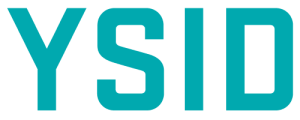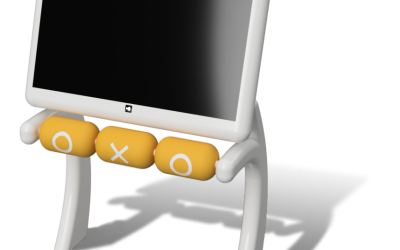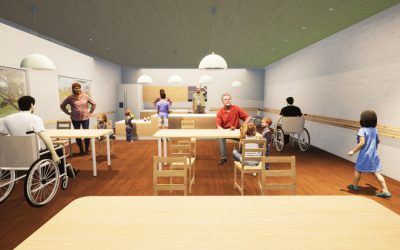학습지향성이 의사소통 능력의 발달에 미치는 영향
Work-based(업무 기반) 학습을 포함한 고등 교육이 학생들의 디자인 관리 기술을 개발한다는 이전 연구들 바탕으로, 본 연구는 진행자로서 어떤 특정 학력과 업무 경험 오리엔테이션이 핵심 디자인 관리 기술을 가장 효과적으로 제공할 수 있는지를 알아내는 것을 목표로 한다. 특히, 주요 디자인 관리 기술과 다른 핵심 기술과의 상호 관계를 규명하는 수많은 이전 연구에서 다뤄졌기 때문에, 본 논문의 범위는 핵심 기술 중 하나로써 의사소통 능력에 초점을 맞추는 것으로 제한된다. 연구된 오리엔테이션은 디자인, 비즈니스, 기타로 분류된다. 게다가, 교양교육은 고등교육의 공통적인 중추이고 의사소통 능력의 전달과 관련하여 여러 전공들의 경쟁의 장을 평준화시키기 때문에, 교육 오리엔테이션은 교양교육 프로그램에 포함된 것으로 범위가 정해진다. 필리핀에서 2개의 대학의 155명을 대상으로 온라인 설문조사를 실시하여 통계 분석을 실시하였다. 결과에 따르면, 주요 가설이 뒷받침되고 있고 학습 오리엔테이션이 의사소통 능력의 주요 예측 변수인 것으로 나타났다. 또한 디자인 학력과 디자인 업무 경험이 의사소통 능력 개발에 가장 효과적인 것으로 나타났다. 본 연구의 결과는 교육 및 업무 배경을 통해 이상적인 디자인 관리자를 식별하는 데 잠재적으로 도움이 될 수 있기 때문에 본 연구의 의미는 디자인 관리 교육 및 인적 자원과 관련이 있을 것으로 예상된다.
INTRODUCTION
Design has expanded to a point that it’s now multi-disciplinary, has both tangible and intangible propositions, and can be holistically applied to an entire organization (Hands, 2017). Design Management is the business side of design that is relevant to this growth. Like in any other field, though, there are ideal types of people in terms of their skills and personal attributes that fit each career role. For the case of design management, along with many other key skills, communication skills are recurringly found to be essential (Perks & Cooper, 2005; Kunrath, et al., 2020; Kang & Nam, 2015). Considering this, this study attempts to look into the development of communication skills.
Specifically, following a previous study that found higher education with work-based learning to have delivered key design management skills, (Norman & Jerrard, 2012), orientations of learning in higher education and in the workplace are dug into to check on their impact on the development of communication skills. However, for a number of universities, higher education is embedded into a liberal education program that affects the skill development.
This research is scoped to include various orientations of learning categorized into business, design, and others; and studying alumni from two Philippine universities with a similar liberal education program. Considering that the liberal education program aims to deliver better communication skills, it can be interesting to find out if there are any differences in the related skills development after the students move on to take their major courses. In line with that, this study aims to find out if the development of communication skills would differ in the various orientations of learning after being exposed to the liberal education program equally; and to see which specific educational background and work experience orientation/s can deliver communication skills most effectively.
LITERATURE REVIEW
Design Management
As Design Management expert, David Hands (2017), mentions design may be linked to just its creative propositions on production and commerce a few years back, but using design just for those is no longer competitive nowadays. Its role in an organization has been expanding to a point that it’s now multi-disciplinary, has both tangible and intangible propositions, and can be holistically applied to organizations’ strategical, tactical, and operational levels.
As the relevant field in making use of design on more than its tangible aspects, Design Management is about managing the use of design in all parts of an organization. This business side of design is multi-disciplinary in nature and is still a relatively new field of study (Hands, 2017). With the effects brought by the traditional uses of design though that keeps design awareness low, which still affects a number of organizations in various industries (Soylu, 2015), we can see Design Management as a movement of adapting the holistic view of design. This means increasing design awareness and honing key design manager skills with the hopes that eventually organizations adapt a culture with design embedded in it.
Design Management Higher Education- and Work-based Learning
In United Kingdom’s Birmingham Institute of Art and Design, a sample of 43 Design Management master’s students were studied to identify which core design management skills can be developed specifically through the students’ work-based experience. The study spanned for five years and included analyzing the students’ grades for the quantitative method and their work for the qualitative method. Moreover, the sample consisted of both “full-time and work-based learning students that had completed the course” for comparison of level of achievement (Norman & Jerrard, 2012).
Overall, this study gives credible information that higher education- and work-based learning, most effectively together, can deliver key design management skills, specifically the acquisition of more business perspective insights and understanding in the context of design management, and better skills in cross-disciplines, leadership and communication. Most importantly, it’s valuable to note that the authors speculate that the orientation of the students’ work-based learning is a factor that affected the results (Norman & Jerrard, 2012). Following this and opting to focus on communication skills but expanding to include work experiences after graduating, it can be insightful to explore how these skills are possibly affected by various education and work orientations.
Communication Skills in Design Management
The previous study this research is building on has left interpersonal skills and communication skills separated yet undefined. For the purposes of this study, though, out of various definitions that can consider them as separate skills, they will be regarded as one. Specifically, the definition of communication skills to be used in this study, comes from another previous study that identified key design skills, which defined personal and interpersonal communication as the “capacity to communicate clearly and directly, attending to details and empathizing with an audience” and “awareness of communication ability in order to make public presentations, set collaborations, establishing rapport, and to communicate among a team” respectively (Kunrath, et al., 2020). Though separated into personal and interpersonal, this study considers both as communication skills.
Relating more to Design Management, communication skills’ importance in it is emphasized due to the recurrence in a number of previous studies identifying key design management skills – key skills for new product development (Perks & Cooper, 2005), design skills in a design management context (Kunrath, et al., 2020), and design manager competencies (Kang & Nam, 2015), and also because of the interrelations with: other key skills (Dickson, et.al., 1995); designer personal attributes (Kunrath, et al., 2020), and values of design (Rae, 2013).
Liberal Education and the General Education Curriculum (GEC) in the Philippines
Liberal education is part of the holistic grooming of the students in the Philippines. According to the Commission on Higher Education in the Philippines (CHED) (1996), this liberal education program is a multidisciplinary approach to education. It adds that this program “helps students develop a sense of social responsibility, as well as intellectual and practical skills that span all areas of study, such as communication, analytical, and problem-solving skills, and a demonstrated ability to apply knowledge and skills in real-world settings.”
Specifically, this liberal education program pertains to the General Education Curriculum (GEC) in the Philippines, which has set minimum requirements for universities to follow. This was first set as the CHED Memorandum. No. 59 series. 1996, which ran from 1997 to 2018 (CHED, 1996). This was later on revised to CHED Memorandum Order No. 20 series 2013, which was implemented in 2018 and among its numerous goals, it aims to help develop intellectual competencies, which includes effective communication skills (CHED, 2013). If effective, the GEC somehow levels the playing field for everyone with regards to the development of communication skills. It’s valuable, though, to see if there’ll be any differences in skill development even after being exposed to the same liberal education program.
Orientations of Learning
For this research, orientations of learning were grouped into three: design, business, and others. The ability to communicate effectively is a fundamental expectation of a university graduate, but students studying design fields often place a greater emphasis on mastery of content at the expense of these critical abilities. A number of studies have demonstrated that students from all disciplines can graduate without achieving the desired level of confidence or proficiency in communicating effectively (Power, et al., 2005). Moreover, “design should be about meaning and how meaning can be created. Design should be about the relationship of form and communication. It is one of the fields where science and literature meet” (Swanson, 1994).
Considering that, it is advised to mix liberal education with design oriented majors in a way that it blends rather than bridging (Swanson, 1994). Also, on top of having that backbone of liberal education with design, it has been studied and shared that cross-functional teamwork in design class activities can deliver communication skills as observed on a study done (Akbulut, 2010). Moreover, it’s been found that co-creation or ”contextual learning with real users” can increase empathy (Lam & Suen, 2015, Hashim, et al., 2019).
It’s similar for the business orientations as well, in a way that it’s best paired with liberal education. In fact, a study says that business education should be approached like liberal education; not to separate liberal arts from business. Taking away liberal arts from a business education curriculum may hinder the students’ ability “to become a liberally educated leader and manager” (Chew & McInnis- Bowers, 2004). Also like in the design orientation, liberal education in business curriculums is said to better be blended than bridged as well (Chew & McInnis-Bowers, 2004).
Specifically comparing how business majors would do against others with regards to communication skills development, a study has found that in considering the Big Five Model of Personality, business majors are found to score higher for conscientiousness, emotional stability, and extraversion; but scored lower on agreeableness and openness (Lounsbury, et al., 2009). All these personality factors can be expected to play roles in communication skills as well.
Other orientations comprise of Science, Technology, Engineering, and Mathematics (STEM), Law and Governance, Education, and Humanities. STEM is a field that necessitates the recruitment of a diverse and conscientious workforce capable of comprehending the scope of global problems and devising innovative solutions to address them. It is vital for STEM students and professionals to hone their communication skills (Strauss, 2017). Moreover, similar to the business and design orientations, mixed with basic liberal arts, STEM major are found to be able to deliver empathy and it’s stressed that cultivating empathy in STEM majors is important (Sun, 2017).
For both Law and Governance and Education, communication skills are one of the core skills. In fact, in law school, communication skills are required than taught. These skills are deemed essential and key to good governance. (Enterplan, n.d.). And similarly for Education, communication skills are top priority of teaching competency (Ibrahim, et. al., 2019). Lastly, the study of arts and humanities, as well as the humanistic aspects of social science, play a crucial role in building empathy and communication skills (Sabatini, n.d.).
METHODOLOGY
For following a quantitative method, a survey questionnaire was distributed through convenience sampling online and a statistical analysis, ANOVA, was done.
The main hypothesis that infers educational background and work experience as independent variables, and communication skills are moderated by the orientation of education and work experienced is simplified into the following hypotheses: (H1) Educational Background affects Communication Skills; (H2) Work Experience affects Communication Skills; (H3) Education-Work Orientation moderates the effect of Educational Background on Communication Skills, and; (H4) Education-Work Orientation moderates the effect of Work Experience on Communication Skills. Moreover, the research questions are as follows: 1. Will there be differences in the development of communication skills in the various orientations of learning after being exposed to the same General Education Curriculum (GEC)? 2. How will the consistent education-work orientations rank in delivering the most positive moderation relationship of the orientation between educational background and work experience as independent variables, and communication skills? 3. In what ways will a mix of education-work orientations affect the relationships?
At least 50 respondents were targeted to participate per learning orientation from the educational background base: business, design, others; and a total of 155 responses were collected. Respondents were scoped to be taken from only two Philippine universities, University of Asia and the Pacific (UA&P) and De La Salle – College of St. Benilde (CSB). The design track respondents are alumni from CSB’s School of Design and Art. The alumni from the business orientation are from both universities’ Management-, Marketing- and Business Administration-cored majors. Finally, the others came from the following UA&P majors: Information Technology, Political Economy, Applied Math, Education, Humanities, and Industrial Engineering.
The survey questionnaire was divided into two main parts: personal information and communication skills measurement. Personal information asked included basic information like age and gender, and educational background and work experiences. As for communication skills, Interpersonal Communication Inventory (Bienvenu, 1971) was used as a measurement after considering the context and definition of communication skills used in this study. It includes 40 items of questions asked against three options: yes (usually), no (seldom), or sometimes. For this study, the hypothesized research model is depicted as such in [Figure 1]:

RESULTS AND DISCUSSION
Overall, the results say that education-work orientation has a significant moderating effect between educational background and work experience, and communication skills. The results of the analysis in checking the first two hypotheses – educational background and work experience alone were not able to significantly affect communication skills, and has to be combined together in order to have a significant effect. Because the moderation is significant in this instance, education-work orientation is rather a main predictor of communication skills. The corrected research model that reflects the results is as follows on [Figure 2]:

To answer the research questions, first, yes, there were differences observed in the development of communication skills in the various orientations of learning after being exposed to the same General Education Curriculum. Moreover, in ranking the learning orientations in delivering communication skills, they are as follows: (1) design education + design work; (2) other education + other work; (3) business education + business work, and; (4) design education + business work. There were not many mixes of education-work orientations to observe from the sample in order to answer the third research question as a significant relationship of educational background and work experience was found.
Interestingly, a design education plus design work experience gave the most positive relationship in delivering communication skills. Upon reviewing of the work experience details of the relevant sample, it’s observed that most of them were people working in multiple people-facing, cross- functional environments like freelancers who deal with various people and teams as vendors or suppliers for design projects; performers who are used to communicating with not just their own teams but even with strangers and crowds; and producers who create outputs for and collaborate with different people.
Coming in last in the rankings are those with design education and business work orientation. This was the only mixed orientation observed in this study. This is due to the possible steep learning curve moving from mostly traditional design training to business work environment as an example were is one that shifted from an animation education background to finance work.
Upon comparison, though there was only one group of mixed backgrounds observed, those with consistent education-work orientations ranked higher in developing communication skills than those inconsistent. This can raise questions whether the liberal education program is really effective. The holistic approach that comes with the said program is only being practiced in the first few years of the undergraduate program. Moreover, the work-based learning, which can be another source of cross- discipline exposure, only happens on the last year. This is only considering the required internship for some majors before graduation and work.
CONCLUSION
This study aimed to find out if the development of communication skills would differ in the various orientations of learning after being exposed to the liberal education program equally and to identify which specific educational background and work experience orientation/s can deliver communication skills most effectively; and these goals were met and more insights were found as well. Rather than focusing on the effect of learning orientations, the results of this research are geared towards emphasizing the need for holistic and interdisciplinary formation from university to employment regardless of learning orientation. Having this holistic view and cross-discipline perspectives are also parts of an implied effective background of a possibly good design manager.
The limitations that come with this study, though, are first, there was insufficient sample size to measure other mixed learning orientations. And second, results may be measurement artifacts because the methodology went for a self-reported measure and communication skills were measured during a pandemic wherein most people are working remotely. For future work, the following are suggested: the same study but with comparison of higher education with a liberal education program against a program without liberal education; having a sample consisting of design managers; a sample consisting of students to test the relationship of educational background orientation to communication skills; and finally a well-distributed sample across various industries per orientation.




